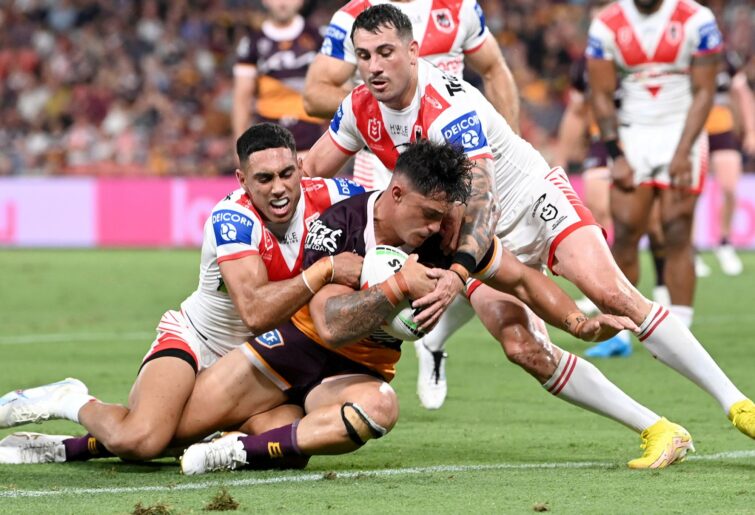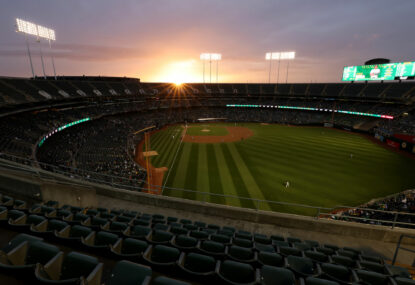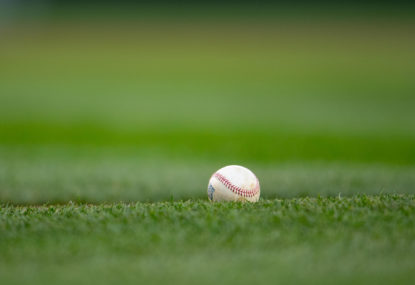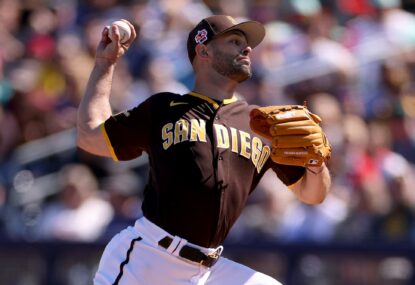After reaching the quarter-finals of the World Baseball Classic (WBC) for the first time, Australia bowed out in a closely fought 4-3 heartbreaker to Cuba.
The journey to the second round brought a lot of attention through increased media coverage and huge interest on social media, with Baseball Australia (BA) claiming ‘well over’ 100 million people were reached by web content and social posts relating to the team and its games.
Whether you’re buying those numbers or not, what’s undeniable is BA have a real chance to drive home this opportunity and hook into the game’s huge yet latent support. The question is – how do you do that now the carnival is over and everyone’s moving on?
Baseball’s deep Aussie roots
A quick history walk. Over time, 36 Australians have played in the Major Leagues including Graeme Lloyd, who won two World Series championships with the New York Yankees, Grant Balfour, Luke Hughes, current Chicago White Sox All-Star Liam Hendriks and probably the most revered of them all, current national team coach and former Milwaukee Brewers All-Star David Nilsson.
Aussies are aware of these bigger names, but most of us have no understanding of the game’s deep history in our own backyard.
Baseball here dates back to the 1850s, when American gold prospectors came to Victoria. Versions of history are disputable, but some of baseball’s earliest recorded games and competitions in Australia predate the first organised versions of Australian rules football, rugby union and rugby league.
The game’s flagship competition is the Australian Baseball League (ABL) which has had a chequered history, with several iterations through the decades.
In the mid 1990s the ABL was at its peak – crowds of 15,000 went to Belmore Oval, Waverley Park and Perth. Live games and highlights of the round were broadcast on free-to-air television. But the money ran out like it always did.
The ABL or a variation thereof has grown and gone broke more than twice and its current version was only made possible through Major League Baseball’s (MLB) involvement in 2010.
Now there’s an eight-club league, three of which needed new ownership after COVID wrecked the 2020/21 seasons.
Before COVID, club memberships were up, streaming figures were trending upwards (locally and globally) and attendances had lifted from the high hundreds to around 4500 for big games, so the appetite was there.
The impact of good results
Asked by The Roar about the impact the team’s WBC performance could have, Australian second baseman and Kansas City Royals prospect Robbie Glendinning said “it hopefully can just bring eyes to baseball.”
“We have a lot of good athletes in Australia, but at the moment they’re going to Australian rules football or rugby, they’re going to a different sport so we need to bring better athletes to baseball and then the more we win, the more funding we get, so that’ll help junior programs and everything going on,” he added.
Glendinning echoes the thoughts of his national team manager Nilsson, who told The Roar: “I think for the sport, any time we are on the world stage performing well and get any sort of publicity, it’s a real boost in the arm for the development and growth, and it shows the young kids back home that we’re capable of performing on the world stage.”
And it’s growth the game needs. According to the Australian Sporting Commission’s Ausplay participation report, baseball’s the 52nd-ranked sport for adult participation and 24th for kids under 15 (although if you add teeball, it’s 22nd).
BA have made higher participation rates the No.1 priority of their five-year participation plan, but they’re operating in a hotly contested environment where every sport wants to attract kids and the accompanying wallets of their parents.
Making the WBC quarterfinals saw the organisation pocket $US400,000 ($A602,558) in prize money and you’d hope the squad of 30 players would get a decent cut for their efforts. Almost all of them are semi-pro, juggling baseball with full-time jobs.
As for the rest of the cash, there needs to be some serious thinking about how to make it stretch as far as it can.
Can you create a program and get it into schools? Enter partnerships with other sports? Source complementary funding from all levels of government? Upgrade some facilities and apply to host pool games in the next WBC? Lobby for baseball to return to the Olympics in Brisbane’s 2032 event?
It all sounds great, but would BA have the capacity to tackle any of these, even if they wanted to? Can they afford to grow themselves in order to grow the game?
This has happened before
The WBC run and all the accompanying coverage isn’t the first time baseball in Australia has stood out.
Longtime Australian baseball broadcaster Chris Coleman puts it simply:
“You could say we’ve had four strikes already, and usually you only get three before you’re out. Hopefully enough lessons have been learned so we can truly make this chance count.
“There’s so many of us baseball lovers who want our game to grow, for more people to see what we see and fall in love with the game.”
Coleman has called ABL and national team games at home and abroad for decades and received Baseball Australia’s Media Award in 2013/14.
The ‘four strikes’ he refers to are some of the Australian game’s biggest moments: winning the Intercontinental Cup in 1999, a silver medal at the 2004 Athens Olympics, the 2014 Major League opening series in Sydney between the Los Angeles Dodgers and the Arizona Diamondbacks, and Australia qualifying for the Super Round stage of the Premier 12 tournament in 2019 (where the world’s top 12 teams play a mini ‘World Cup’).
That Premier 12 tournament included the men’s team’s first-Ever win over the USA, a huge achievement which barely made a ripple in our media.
“We’ve had chances like the 2014 MLB opening series, where the SCG was packed to capacity with people who love baseball alongside people wanting to see what all the fuss was about,” Coleman says.
“That was a golden opportunity to grow the game and build interest in the ABL but the ability to harness media beyond a moment in time hasn’t been there.
“I’ve spoken with sports journalists who didn’t know the ABL was on because they hadn’t seen any media releases. We just need to be constantly putting content out there and showing its value.”
Tap into that latent support and there’s plenty of eyes for that content. Walk around your local shopping centre and you’ll see MLB gear all over the place. Caps, jerseys and tees abound in stores. MLB games rate well comparatively on pay TV.
American ticket seller Stubhub released data last week showing Australia as MLB’s third-biggest international sales market for game tickets, behind the United Kingdom and Japan.
But it’s not easy to get your eyes on the ABL, which is now broadcast via its own streaming service, a change from when games were available across YouTube, Facebook, Fox Sports and Kayo.
Streaming quality is varied, to put it politely, because each team manages their own broadcast. Some teams have professional set-ups and do great productions, others are outshone by local park football and grade cricket.
This inconsistency is something BA needs to clean up, alongside its own promotion of the ABL.
BA’s social media support for the recent season was eager and plentiful, but also rife with basic errors describing plays, incorrectly naming players and getting simple baseball terminology wrong. In this day and age, you can’t have that.
To be fair, though, their work on the WBC campaign has been first class and was rightly picked up by journos and sports fans globally.
Availability is critical. Believe it or not, sports in Australia can’t just walk into a network and walk out with a bag of broadcasting rights cash.
If you’re not the AFL, NRL, cricket or a select few others, you’re probably paying to have your sport on TV to the cost of anywhere between $25,000 and $40,000 per broadcast.

(Photo by Bradley Kanaris/Getty Images)
Baseball doesn’t have the deep pockets and corporate networks of a Larry Kestleman nor the political sway of the AFL, so streaming is their way ahead for now.
Making it known
Each season the ABL features many prospect players from MLB clubs, sent down under to tune their skills against a good decent level of competition. This is something BA and the clubs can use a lot better than they have.
The number of import players in their league is not a new issue for baseball – or basketball, or netball, or cricket for that matter. There’s a lot of folks around who’d prefer local players got those spots.
But think about how the NBL promotes its ‘Next Stars’ program. For all their faults, imagine how the APL and A-League clubs would promote teams like Manchester United or Arsenal sending their young players to the A-League for a season?
Surely it’s worth promoting the prospects and better highlighting the ABL/MLB club relationships, including Aussie players who come back to the ABL between seasons from their MLB clubs.
That’ll annoy some but like we’ve seen with the NBL and A-League, relying purely on your homegrown talent to sell the league and put on the show won’t work out right away when fans prefer the Premier League and the NBA. It’s sad, but it’s reality.

Steph Curry celebrates a three-pointer. (Photo by Elsa/Getty Images)
Making noise about your links to the bigger comps are the foot in the door, then the rest comes over time and you can change tack.
BA also need to revisit the proposed ABL Women’s competition, which was in planning during 2019 until financial impossibilities then COVID knocked it down the road.
A lot of what BA relies on to make its mark are the performances of its national teams, which is a very Australian way to go about it.
Women’s World Cup qualifiers are in August and September, with the finals in 2024. This men’s side isn’t scheduled to play again until the next Premier 12 tournament later this year and both national teams rarely play outside of scheduled tournaments.
There’s plenty to do and plenty backed up already. But there’s time for BA to think, plan and budget for how they’re going to move forward. For all of us baseball fans and for everyone who’s thinking of jumping on, we’re hoping they make the right choices.



































































































